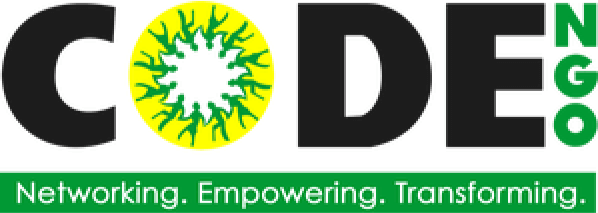Reflections from www.code-ngo.org/covid
When the pandemic struck the Philippines, CODE-NGO reactivated its regional DRRM Coordination Hubs to organize efforts, despite mobility and financial constraints, to respond to the needs of marginalized communities, frontliners, and other Filipinos. Every week from April to July, the hub convenors came together online to share community information, links to resources, good practices, and response plans. The conversations brought out stories of people from different places that felt much more distant because of the community quarantines.
When the pandemic struck the Philippines, CODE-NGO reactivated its regional DRRM Coordination Hubs to organize efforts, despite mobility and financial constraints, to respond to the needs of marginalized communities, frontliners, and other Filipinos. Every week from April to July, the hub convenors came together online to share community information, links to resources, good practices, and response plans. The conversations brought out stories of people from different places that felt much more distant because of the community quarantines.
To treasure these stories, CODE-NGO birthed the CODE-NGO COVID-19 Response and Recovery website (www.code-ngo.org/covid). The website published 35 articles – definitely a number far less than the many unwritten efforts of our member networks!
The experience of managing this dedicated website certainly pointed out how Communication should indeed be a core and strategic program in our work to achieve social change. Communication conveys the purpose of our coalition, the issues we deal with, and the accomplishments we have made. Communication can definitely take many forms, including word of mouth, use of print and broadcast media, press releases, posters and brochures, presentations, and special events, but websites have become a staple.
The experience of managing this dedicated website certainly pointed out how Communication should indeed be a core and strategic program in our work to achieve social change. Communication conveys the purpose of our coalition, the issues we deal with, and the accomplishments we have made. Communication can definitely take many forms, including word of mouth, use of print and broadcast media, press releases, posters and brochures, presentations, and special events, but websites have become a staple.
The experience of managing this dedicated website certainly pointed out how Communication should indeed be a core and strategic program in our work to achieve social change. Communication conveys the purpose of our coalition, the issues we deal with, and the accomplishments we have made. Communication can definitely take many forms, including word of mouth, use of print and broadcast media, press releases, posters and brochures, presentations, and special events, but websites have become a staple.
It turned out, however, that the plan was an ambitious one – It set to communicate our member networks’ COVID-19 action in various LGUs and regions on traditional and social media platforms, and planned to pass the information on key national government COVID-19 response and recovery programs to CSO leaders and to gather feedback from them. We were not ready for those. Nevertheless, we continued to apply the lessons whenever we could, ex. for the Social Development Week 2020 and online promotions on Facebook.
Communication guidelines and planning templates were customized and utilized for CSOs’ advocacy against certain provisions of the Anti-Terrorism Act of 2020.
The work of CODE-NGO and its member networks is replete with information that are simply waiting to be communicated! The Communications Program continues to support, innovate, and adapt to this fast-paced digital age and aims to connect with and reach more readers nationally and globally.
